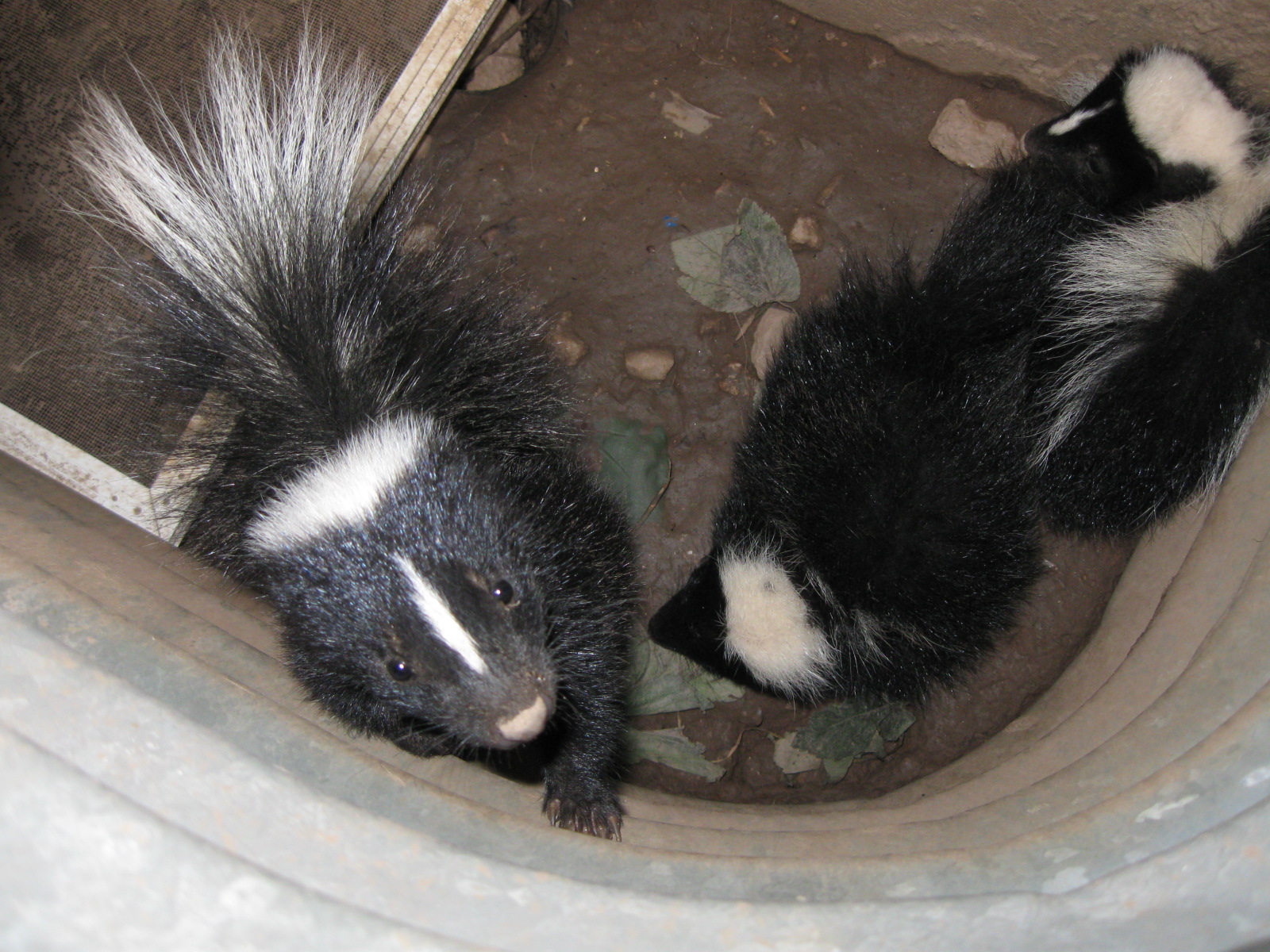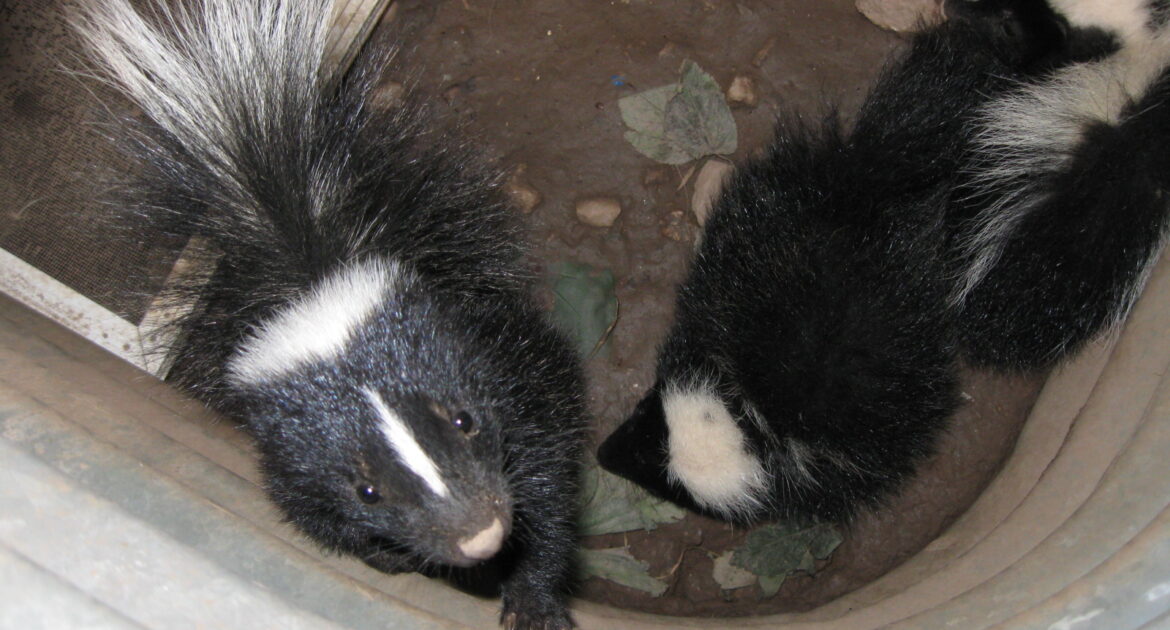There are two things it seems everyone knows about skunks: they stink really bad, and they are black with a white stripe running down their backs. For most, their closest encounters are seeing some poor critter that didn’t manage to cross the road fast enough and smelling the chemicals the skunk released in the process. Skunks are rather shy animals, and they are most active after dark, so spotting a live one isn’t a common event. You may still know you have one on your property if your dog happens to have an unfortunate encounter. If you smell the offending stench, and it isn’t coming off of your dog, it may be mating season. When you suspect a skunk has set up shop on your property, contact Skedaddle for non-smelly and humane skunk removal in Madison.
Love Stinks
Skunks can be playful and mischievous, but they tend to be solitary creatures. In the winter, they may snuggle up together in a single den to keep warm while they enter a state of torpor. Though they don’t hibernate, they become less active, conserving their energy when less food is available. However, while we’re freezing in the middle of February, male skunks take to the neighborhoods looking for love, or at least for willing mating partners.
Males are more of the love ’em and leave ’em sort rather than the committed kind. Each year, they’ll mate with as many females as they can. When a female signals interest, he’ll hang around with her in her den for a few days to a couple of weeks before ambling on in search of the next partner. As for the females, if they aren’t interested, they’ll let the male know he isn’t welcome. When a female sprays in the presence of a male, she’s sending a clear signal that she is not interested. From early February through March, if you detect the foul odor on your property, there may be a female hanging around that is rejecting the advances of an amorous male. For the males, love really can stink.
Motherhood Is Lonely
When a female decides to accept a male’s advances and successfully mates, she’ll remain in her den while the male moves on. Females prefer to go it alone in motherhood. They’ll avoid males during gestation and don’t want them around after the kits are born either. The little ones are born between the beginning of May and the end of June. Mama skunk gives birth to four to seven kits, and she’ll have one litter per year.
When the kits are born, they are blind, deaf, and covered in fine, soft fur. In other words, they are helpless. The mother is very protective of her little ones, so if you have a skunk on your property, and it happens to be a female with kits, it’s best to give her space. This is one time when these normally non-aggressive animals will lash out. Their spray is bad, but you don’t want to be on the receiving end of their teeth or claws, either.
The kits won’t leave the den until they are between six and eight weeks old. Mama skunk shows them the ropes, and the little ones stick with her for about a year. Males may find a nearby den earlier than that, but, generally, the whole family forages and dens together through the following winter. At that time, the young males and females are ready to find their own mates.
Removal Is Risky
When you discover that a skunk has moved in under your deck or porch, it’s best to call in the professionals. Skedaddle technicians can safely remove a skunk when it is safe for her and her little ones. They have the expertise and know-how to take care of the situation without getting sprayed themselves. When you need help with skunk removal in Madison, give us a call.




